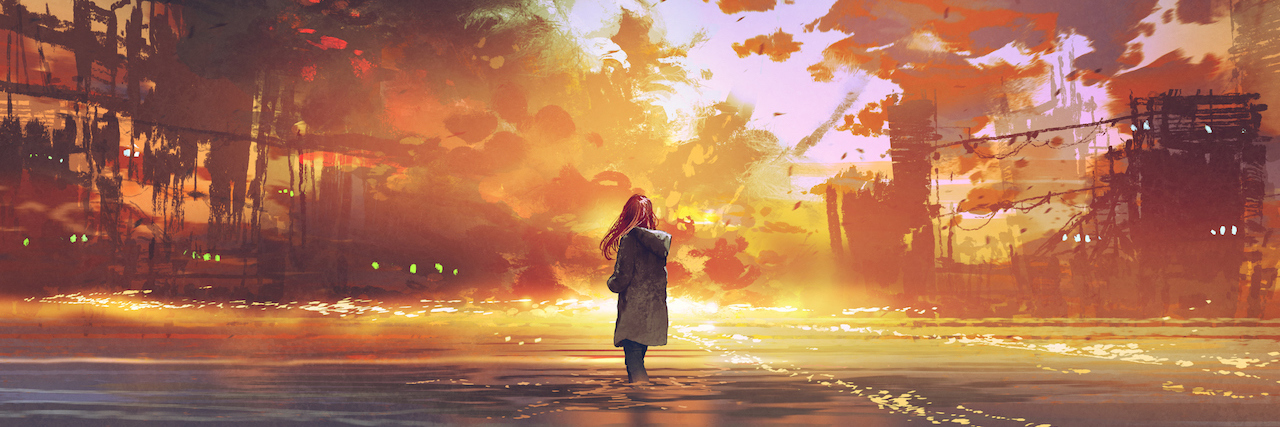We’re all dealing with something invisible — Kevin Love made that clear a few months ago. Some of us know it, and some don’t.
When it comes to post-traumatic stress disorder, some of our young people will never get the correct diagnosis or treatment, and that, in itself, can be deadly to survivors.
This can lead to more severe issues, self-medication and, unfortunately, suicide. I spent years trying to figure out what was wrong with me after being a direct child survivor of 9/11 all of those years ago, one of the few children to actually be caught under the Towers from start to finish.
As a teenager looking for relief and for answers, I was swept through a revolving door of therapists and psychiatrists who fit my symptoms into one diagnosis, then another, scribbling out prescriptions for medications I had severe reactions to, and yet, nothing changed. Things only got worse.
Years later, as I begin to answer people’s questions about my experience, I’ve been asked more than once whether I find it surprising that it took so long to finally get the diagnosis of post-traumatic stress disorder (PTSD) and the proper treatment for it.
There are incredibly complex ways trauma affects the brain. It can lead to exacerbated and dangerous behavior when it comes to sex, relationships, drinking, work, being able to concentrate, school, sleeping at night, friendships and relationships with family.
For young people, it can be hard to put words to what they’re feeling or connect the dots, and conversations initiated by teachers or parents usually make kids want to talk about it less and curl up into themselves more.
That’s why we have to get this in front of them directly, and let them know they should feel empowered to seek out the help of a specialist if they start to experience the following symptoms:
In the immediate aftermath:
- Flashbacks
- Panic attacks
- Nightmares/Insomnia
- Hyper-vigilance
- Hyper-reactivity (larger and more emotional reactions than a situation may seem to call for)
- Easily startled
- Intrusive thinking
- Disturbing thoughts or worries
- Fear of separating from parents or leaving home
In the longer term:
- Unhealthy attachment or codependency in romantic relationships
- Frequent engagement in sexual activities that could be considered dangerous or unhealthy
- Missing school, cutting class, grades dropping, difficulty with other kids and faculty
- Anger, isolation, depression, self-harm, and aggression
- Drinking, drugging, excessive eating or shopping
- Fear of abandonment
The thing about trauma is, it’s progressive, and requires a specific kind of trained therapist to diagnose and treat, which is why so many kids give up after going to talk therapy and feeling like nothing changed.
Trauma affects the developing brain of a teenager by creating new patterns and pathways in the brain that lead to thoughts, behaviors, perceptions and actions that come from a place of fear, panic and mistrust.
Receiving the right diagnosis, treatment and seeking alternatives when we feel we’re being misdiagnosed or mis-medicated is imperative.
It’s not just survivors of school shootings who are affected: One out of every two kids in this country will be affected by trauma. This includes events that occur in everyday life like the death of a parent, surviving an accident, witnessing domestic abuse or other acts of violence, being exposed to something disturbing and so much more.
It can also take months or years for symptoms to show up, which is why it’s so important to keep a very diligent eye for changes that might disguise themselves as “teen angst” and can lead, when untreated, to suicide.
PTSD is often misdiagnosed by typical psychologists because they are trained to treat what immediately presents itself as a DSM and medically treatable diagnosis like general anxiety, addiction or bipolar. Then comes the medications that don’t work, the talk therapy that doesn’t work, all of which can be re-traumatizing in itself. But young people — especially children — don’t necessarily even realize they’re living with trauma or have a history of trauma… and it never comes up. They also often lack the words to describe what they’re experiencing on their own, so there is something to be said about someone finally putting words to some part of what they’re experiencing.
Trauma, and the treatment of PTSD, is something a specialist trained in that area should tackle with cognitive behavioral therapy, dialectical behavioral therapy, eye movement desensitization and reprocessing, art therapy and a combination thereof. Sometimes, successful treatment is paired with medication.
A study just broke last week that the suicide rate among teenage girls is higher than ever. Ariana Grande also had an interview to TIME last week reflecting on the terrorist attack that took place at her concert a year ago. And at the end of last week, another school shooting took 10 young lives. These events reverberate across state lines and even on a global level, and they make us all feel afraid. It is possible to feel so afraid that secondary trauma occurs, warranting treatment as outlined above. Some kids may go on unaffected by it, as we are all different. And for those directly exposed to violence in any form across the country, support, treatment and a plan in place to restore a feeling of safety is crucial for carrying on and living a healthy life.
Getty image via Grandfailure

